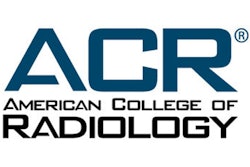
The U.S. Centers for Medicare and Medicaid Services (CMS) has often denied payment for secondary interpretation of imaging exams initially performed at other institutions, considering the additional read unnecessary. But this is changing, due in part to increasing demand for the service from referring physicians, according to a study published online July 15 in the Journal of the American College of Radiology.
The study findings confirm the value of the practice, wrote a team led by Dr. Andrew Rosenkrantz of NYU Langone Medical Center.
"Despite historically high denial rates for secondary interpretation services, we found CMS denial rates for secondary interpretations during our study period to be low, particularly so in more recent years," the group wrote. "We believe [this reflects] referring physician and patient demand for, and payor acceptance of, secondary interpretation services."
Previous research focusing on CT exams showed substantial national growth in the performance of and coverage for secondary interpretations in the Medicare population, according to the group. But it has remained unclear whether trends in payment coverage for secondary CT reads are generalizable to other imaging service families. To investigate this issue, Rosenkrantz and colleagues analyzed data from the Medicare Physician/Supplier Procedure Summary Master Files from 2003 to 2016 for secondary interpretations across a range of 45 imaging service groups.
Overall, the researchers found broad increases in secondary read services across a variety of imaging families, and these increases occurred without comparable growth in primary imaging interpretations. Chest radiography and fluoroscopy had the highest number of billed secondary interpretations in 2016, at 75.5%, which the group suggested could be due to self-referrals by nonradiologists.
"The volume of secondary interpretations was drastically higher for chest radiography than for other service families, potentially relating to nonradiologists billing for interpretations of services performed in their offices," Rosenkrantz and colleagues noted.
The imaging service families with the greatest compound annual growth rates (CAGR) in billed secondary interpretations during the study time frame included the following:
- Cardiac MRI: 35.7%
- Breast MRI: 33.1%
- Abdominal and pelvic MRI: 30.3%
- Unspecified nuclear medicine: 27.9%
- Head and neck CT: 25.3%
- Spinal CT: 20.9%
- Chest MRI: 20.7%
Finally, Rosenkrantz and colleagues found that the secondary interpretation denial rate in 2016 was less than 25% for all imaging service families and less than 10% for 19 of them.
"Contrary to conventional wisdom, denial rates for secondary interpretation services are now uniformly low," they wrote.
The investigators offered several theories to explain why secondary read volumes are increasing, including improved technology for sharing outside exams between facilities; an increase in second read requests from healthcare networks (in an effort to ensure formal documentation of a patient's diagnosis and reduce medicolegal risks); or a general trend toward subspecialized care.
"Secondary interpretations have the potential to render more accurate interpretations, alter patient management, and lower rates of repeat imaging examinations, which in turn may entail additional exposure to ionizing radiation and intravenous contrast agents as well as additional costs to patients and healthcare systems," the group concluded.




















